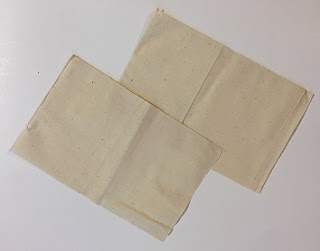Design in Context
Recycled Denim Container Challenge
Students are given the brief to
make a ‘container’ using recycled denim jeans. The brief is broad and allows
for a range of possibilities in terms of what can be ‘contained’ – a pot plant,
pencils and pens, cash, laundry, library books…..
Year 10 Elective
The challenge relates to the
Materials and technologies specialisations and would allow Yr 10 students to
have an “opportunity to design and produce (a) designed solution…” (ACARA,
2015). It allows for assessment across both strands, knowledge and
understanding and process and production skills.
The relevant element of knowledge
and understanding is, “Investigate and make judgements on how the
characteristics and properties of materials, systems, components, tools and
equipment can be combined to make designed solutions” (ACTDEK046, ACARA, 2015).
An elaboration of this element requires students to justify their decision-making
when choosing, for example, from a range of materials, systems and equipment.
The element of relevance in the processes and production skills strand is,
“Develop and communicate design ideas by applying design thinking, creativity,
innovation and enterprise skills of increasing sophistication” (ACTDEP049, ACARA,
2015). This element is elaborated by the expectation that students use a range
of techniques to create a functional solution. Also enabled in both these
elements are some of the general capabilities, for instance, ethical
considerations, literacy and critical and creative thinking.
This challenge meets the
requirements noted above in an integrated fashion and can thus be justified as
‘design’ as students will combine a number of elements to create an artefact
that solves a problem – how to create a container using recycled denim jeans.
In order to undertake this challenge students need to
reflect on the limitations and possibilities presented in the use of recycled
denim jeans (characteristics and properties of materials), how they must
progress through each stage of the brief (systems) and the safe use of
scissors, pins, sewing machines, overlockers and irons (tools and equipment).
Completion of this challenge will enable students to follow the design process
which will require creative thinking, the justification and reflection of
design ideas (drawn and annotated in a journal – literacy and critical thinking)
and choosing the best method to produce the finished product. Further, they
will need to design and modify ideas to ensure the ‘container’ is functional
according to its end use.
Using recycled materials
presupposes a consideration of the ethics of the fashion industry and its
propensity to cause damage to the environment due to the use of dyes and
wasteful practices (especially at end of use stage) as well as social concerns,
for example the use of ‘sweatshop’ labour. Discussions around these issues will
extend students understanding of such practices. Finally, an evaluation of the process,
including the finished product, gives a further opportunity to develop critical
thinking with the potential of further developing initial ideas based on that
reflection.
Reference List
Australian Curriculum, Assessment
and Reporting Authority (ACARA). (2015) Design
and Technologies: Sequence of content F-10. https://www.australiancurriculum.edu.au/f-10-curriculum/technologies/design-and-technologies/ Accessed
10/8/2018


Comments
Post a Comment